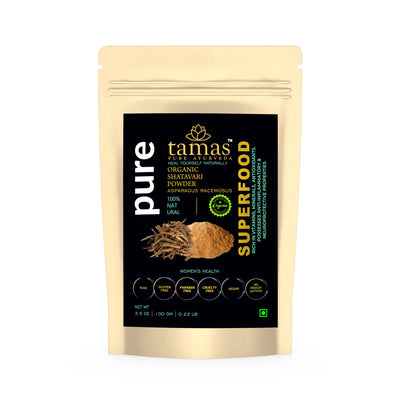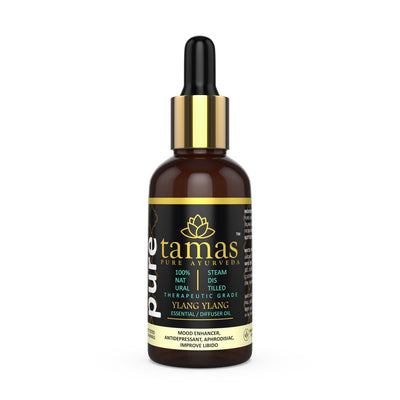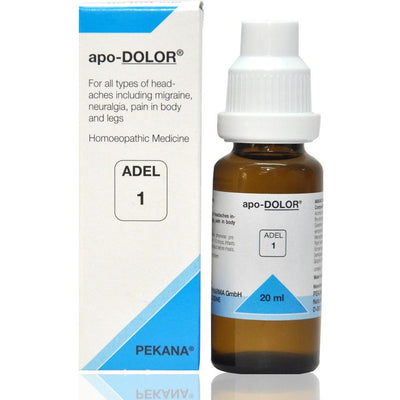
Mahathikthaka Ghritham
Kerala Ayurveda's Mahathikthaka Ghritham is a poly-herbal, medicated Ayurvedic medicine for dermatitis treatment and skin-related discomfort. Mahathikthaka Ghritham contains handpicked ingredients that are known to provide relief from boils, rashes, pus discharge and Ayurvedic treatment for eczema on hands.
This Ghritham is formulated with the guidance of ancient Ayurvedic texts that have recommendations to create Ayurvedic medicine for skin problems and as eczema and dermatitis medicine from naturally occurring ingredients
Dosage:
The recommended dosage of Mahathikthaka Ghritham is 6-12 grams, twice a day with hot water or as directed by a physician.
Ingredients in Mahathikthaka Ghritham
Ayurvedic Approach to skin disorders
Ayurveda is a unique branch of medicine and a completely naturalistic system that embodies mind-body medicine and can be useful in balancing the combination of elements of space, air, fire, water and earth which are believed to be primary constituents that all individuals are made of. These elements combine to form the three different basic types of human constitution or Doshas - Vata, Pitta and Kapha. The dosha affects not just the shape of one’s body but also bodily tendencies (like food preferences and digestion), and the temperament of one’s mind and emotions.
According to Ayurveda, eczema and psoriasis are caused when an individual has too much fire, or Pitta, in the mind and body. The excess Pitta inside the body manifests itself as toxins on the skin which result in the itchy flare-ups associated with eczema and psoriasis. A broad categorization of eczema or vicharchika as it is known in Ayurveda can be listed as three types:
Vata type: The skin tends to be rough, dry, hard, itchy and scaly. The skin is aggravated by cold, wind, dryness and stress and relieved by the application of oils, especially sesame.
Pitta type: The skin is hot and inflamed, and it is aggravated by heat and heat-inducing foods, exposure to the sun and application of most oils, reflecting a state of heat and toxicity in the body.
Kapha type: Kapha skin problems are often accompanied by mucous congestion, lethargy and sluggish metabolism. The skin is aggravated by cold, damp, application of oils and eating dairy products and sugar.
Eczema is more common in Pitta types as Pitta can overheat the blood (Rakta dhatu) and is predisposed to toxic conditions that are expressed through the skin. Factors that cause different types of skin problems include poor digestion (low agni), toxins in the bowel (ama), incorrect diet, overuse of sour, salty, or pungent tastes, heavy, sweet or oily foods, as well as over-use of cosmetics, perfumes, synthetic creams, and more such products.
For some individuals, this condition can be acute and pass within a short period of time, while others experience lifelong symptoms. Though not a life-threatening condition, eczema does cause psychological stress and extreme self-consciousness. Treatment of eczema in Ayurveda is a holistic process with more than the just application of topical creams or oils. It requires discipline, observance of diet and lifestyle, and an effective method for stress management.
Eczema - An Overview
Eczema, also called atopic dermatitis, is a common skin condition and is marked by itchy and inflamed patches of skin. While it is often seen in babies and young children, eczema can come in a variety of types in children, teens, and adults. Eczema is almost always itchy and a rash most commonly appears on the face, back of the knees, wrists, hands, or feet. The affected areas usually appear very dry, thickened, or scaly. Atopic dermatitis is the most common and chronic type of eczema. Other types include:
Symptoms of Eczema
The main symptom of eczema is itchy, dry, rough, flakey, inflamed, and irritated skin.
Other symptoms include:
Causes of Eczema
Eczema is often caused by a combination of factors that include:
Kerala Ayurveda's Mahathikthaka Ghritham is a poly-herbal, medicated Ayurvedic medicine for dermatitis treatment and skin-related discomfort. Mahathikthaka Ghritham contains handpicked ingredients that are known to provide relief from boils, rashes, pus discharge and Ayurvedic treatment for eczema on hands.
This Ghritham is formulated with the guidance of ancient Ayurvedic texts that have recommendations to create Ayurvedic medicine for skin problems and as eczema and dermatitis medicine from naturally occurring ingredients
Dosage:
The recommended dosage of Mahathikthaka Ghritham is 6-12 grams, twice a day with hot water or as directed by a physician.
Ingredients in Mahathikthaka Ghritham
- Saptacchada (Saptaparna) Alstonia scholaris
- Prativisha (Ativisha) Aconitum heterophyllum
- Sampaka (Aragvadha) Cassia fistula
- Tiktarohini (Katuka) Picrorhiza kurroa
- Patha Cissampelos pariera
- Musta Cyperus rotundus
- Ushira Vetiveria zizanioides
- Haritaki
- Bibhitaka
- Amalaki
- Patola Trichosanthes dioica
- Picumarda (Neem)
- Parpataka (Parpata) Fumaria indica
- Dhanvayasa Alhagi pseudalhagi
- Chandana (sveta chandana)
- Pippali
- Gajapippali Piper chaba
- Padmaka Prunus poddum
- Haridra Haldi
- Daruharidra Daruhaldi
- Vaca Acorus calamus
- Vishala (rakta indravaruni)
- Satavari
- Sveta Sariva
- Krishna Sariva
- Vatsaka bija (Kutaja)
- Vasa
- Murva Marsdenia tinescsima
- Amrita giloy
- Kiratatikta Swertia chiraita
- Yashtyahvaya Licorice
- Trayamana Gentiana kurroa
- Water
- Amrita phala rasa (Amalaki)
Ayurvedic Approach to skin disorders
Ayurveda is a unique branch of medicine and a completely naturalistic system that embodies mind-body medicine and can be useful in balancing the combination of elements of space, air, fire, water and earth which are believed to be primary constituents that all individuals are made of. These elements combine to form the three different basic types of human constitution or Doshas - Vata, Pitta and Kapha. The dosha affects not just the shape of one’s body but also bodily tendencies (like food preferences and digestion), and the temperament of one’s mind and emotions.
According to Ayurveda, eczema and psoriasis are caused when an individual has too much fire, or Pitta, in the mind and body. The excess Pitta inside the body manifests itself as toxins on the skin which result in the itchy flare-ups associated with eczema and psoriasis. A broad categorization of eczema or vicharchika as it is known in Ayurveda can be listed as three types:
Vata type: The skin tends to be rough, dry, hard, itchy and scaly. The skin is aggravated by cold, wind, dryness and stress and relieved by the application of oils, especially sesame.
Pitta type: The skin is hot and inflamed, and it is aggravated by heat and heat-inducing foods, exposure to the sun and application of most oils, reflecting a state of heat and toxicity in the body.
Kapha type: Kapha skin problems are often accompanied by mucous congestion, lethargy and sluggish metabolism. The skin is aggravated by cold, damp, application of oils and eating dairy products and sugar.
Eczema is more common in Pitta types as Pitta can overheat the blood (Rakta dhatu) and is predisposed to toxic conditions that are expressed through the skin. Factors that cause different types of skin problems include poor digestion (low agni), toxins in the bowel (ama), incorrect diet, overuse of sour, salty, or pungent tastes, heavy, sweet or oily foods, as well as over-use of cosmetics, perfumes, synthetic creams, and more such products.
For some individuals, this condition can be acute and pass within a short period of time, while others experience lifelong symptoms. Though not a life-threatening condition, eczema does cause psychological stress and extreme self-consciousness. Treatment of eczema in Ayurveda is a holistic process with more than the just application of topical creams or oils. It requires discipline, observance of diet and lifestyle, and an effective method for stress management.
Eczema - An Overview
Eczema, also called atopic dermatitis, is a common skin condition and is marked by itchy and inflamed patches of skin. While it is often seen in babies and young children, eczema can come in a variety of types in children, teens, and adults. Eczema is almost always itchy and a rash most commonly appears on the face, back of the knees, wrists, hands, or feet. The affected areas usually appear very dry, thickened, or scaly. Atopic dermatitis is the most common and chronic type of eczema. Other types include:
- Contact dermatitis which is caused by contact with irritants. Here, a burning and itching sensation, and redness occur, however the inflammation goes away when the irritant is removed.
- Dyshidrotic dermatitis affects fingers, palms of the hands, and soles of the feet causing itchy, scaly patches of skin that flake or become red, cracked, and painful.
- Nummular dermatitis causes dry, round patches of skin in the winter months and usually affects the legs.
- Seborrheic dermatitis causes itchy, red, scaly rashes, particularly on the scalp, on the eyebrows, on the eyelids, on the sides of the nose, and behind the ears.
Symptoms of Eczema
The main symptom of eczema is itchy, dry, rough, flakey, inflamed, and irritated skin.
Other symptoms include:
- Intense itching
- Red or brownish-gray patches
- Small, raised bumps that ooze fluid when scratched
- Crusty patches of dried yellowish ooze, which can signal infection
- Thickened, scaly skin
Causes of Eczema
Eczema is often caused by a combination of factors that include:
- Genetics
- Abnormal function of the immune system
- Environment
- Activities that may cause skin to be more sensitive
- Defects in the skin barrier that allow moisture out and germs in
- Endocrine disorders such as thyroid disease
You may also like
More from Kerala Ayurveda
More from Aasaan
Recently viewed

















